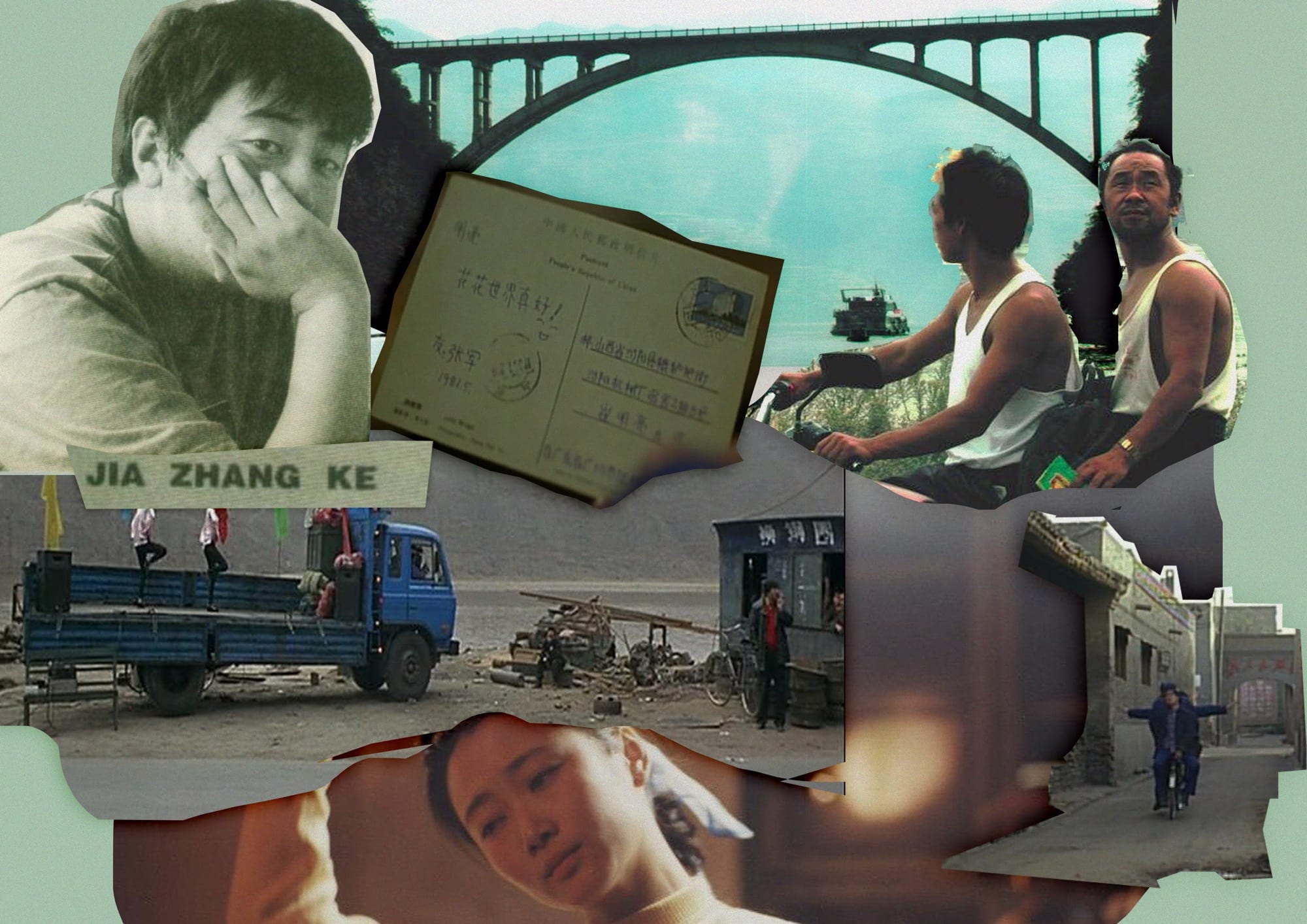The life and work of Jia Zhangke, Chinese auteur
Jia Zhangke belongs to a generation of Chinese filmmakers who became disillusioned with big-budget productions that avoid addressing China’s social problems. His movies go a long way toward rectifying that.

Jiǎ Zhāngkē 贾樟柯 is one of China’s most prominent filmmakers, a member of a loosely defined group of “Sixth Generation” filmmakers. You might recognize his name — or at least one of his film titles — from President Barack Obama’s 2019 favorites list. So who is this director of Ash is Purest White, and why is he such a big deal?
Primarily known for unflinching, indie stunners, and for being a poster child of the international film circuit — in 2008, NPR stated that he “may well be the most important filmmaker working in the world today” — Jia’s work has taken a marked turn for the bolder since 2010. Jia’s films are remarkable in how they are interested in neither the China that foreigners think they know nor the flashily urban or pastoral Chinas to which Chinese lenses themselves often gravitate. Rarely, if ever, are his settings Beijing or Shanghai; rarely, if ever, are his scenes of rural life idyllic. As the Atlantic noted in a review of Ash is Purest White, Jia, “whose stark, sometimes unflattering realism has led to repeated clashes with Chinese censors, possesses an unparalleled skill for creating a tangible sense of time and place to anchor his sweeping stories.” His films are marked with pop songs and occasional surrealist imagery, staking a claim in the present while keeping an eye on the future.
(Although his movies are no longer on Netflix, those in the U.S. should check with their public libraries to see if they have Kanopy access. Most of Jia’s recent features are available there.)
The beginning
Jia was born in Fenyang, Shanxi province in northern China in 1970. Although his childhood was not impoverished — his father was a local schoolteacher, and the family had a small library in a time and place when such was rare — Jia still recalls his youth as hungry and provincial.
He wanted to get away from Fenyang as much as possible — and permanently, as soon as possible. Ironically, Jia would later return to Shanxi, including Fenyang, often in his films. But when he was young and standing with his father on the city’s old walls on a windy day, as he recounts in Walter Salles’s documentary A Guy from Fenyang, all Jia could think was how infinite the world beyond seemed.
In Taiyuan, the capital of Shanxi province, Jia studied oil painting, until he watched Chén Kǎigē’s 陈凯歌 Yellow Earth (1988). Inspired, Jia decided to enter film. He applied to the Beijing Academy of Film under the directorial track. After being rejected twice, he tried once more — this time under the much less competitive film theory track. He was accepted, and in 1993, at the age of 23 — years older than his classmates, as he would soon discover — Jia left for Beijing.
Just a guy from Fenyang
Fenyang is a county-level city; its biggest claim to fame today is, most likely, Jia himself. Like much of Shanxi and its neighboring provinces, it is heavily industrial where it is not agricultural; the coal mines of the area and the larger industrial hub of Datong appear and reappear in Jia’s work.
In the documentary A Guy from Fenyang, Brazilian director Walter Salles follows Jia as he returns to Fenyang, revealing some of the mysterious yet formative powers of his hometown. Fenyang was where Jia returned for his first features, Xiao Wu (1997) and Platform (2000) — films that caught Martin Scorsese’s attention, and yet films that remained underground and viewable only by pirated DVD in China. Jia recalled the time in 2001 that a coffeehouse in Beijing hosted an afternoon screening of Platform. He had been incredibly excited for the event. But the cafe was glass-walled, and the light made viewing virtually impossible. Rain began falling partway through, leaking into the building. Jia felt incredibly sad, wondering why his films could not be given proper theatrical releases.
In addition to Shanxi, which Jia has called “my true China,” many of Jia’s works are also drawn to the Fengjie or Three Gorges area in what was formerly Sichuan, now under the direct administration of the Chongqing municipality. Jia first arrived in the region to film the documentary Dong (2006), following painter Liú Xiǎodōng 刘小东. Watching the complete transformation of the area for the Three Gorges Dam project — and its displacement of 1.2 million people — moved Jia to make a companion piece, a fictional story.
That story became Still Life (2006), probably the best-known of Jia’s films and winner of the highest prize at the Venice International Film Festival:
More than just well-known, Still Life is also artistically prominent in Jia’s other works. Here, his concern with modernization’s effects on individual lives and the interface between countryside and city find a stable base around which to revolve. The film forms a gravitational center for films that have come after.
https://www.youtube.com/watch?v=9Q0M8EvUkTU&feature=youtu.be
Tao
In 2000, while preparing to film Platform, Jia visited Taiyuan Normal College, hoping to recruit a young dancer for a role. He audited the class of Zhào Tāo 赵涛, a young dance teacher at the college. Then 23, Zhao remembers seeing a large crew outside the school that morning and asking what was happening. When they told her that a filmmaker would be casting, Zhao told her students to perform their very best that day, even as she did not reveal the casting to them.
After the class, a member of Jia’s crew approached Zhao and said that the director wanted her.
“Me?” she asked, shocked. She had never considered acting at all.
Later, after a successful role in Platform, her stories to Jia about her former life as a dancer — the spectacle of performance and the loneliness offstage — inspired Jia’s next feature, The World. The World follows the staff of the Beijing World Park through their humiliations and alienation as they cater to and act for tourists. Released in 2004, The World was Jia’s first “state-sanctioned” film, receiving theatrical release.
Jia has cited Taiwanese “New Wave” director Hou Hsiao-hsien (侯孝贤 Hóu Xiàoxián) of City of Sadness fame as a major influence, and Hou’s signature is everywhere in Jia’s works: the sweeping long shots; a cinematography that gravitates toward openness and stillness at once. However, Jia’s continuous work with Zhao Tao recalls the work of yet another “New Wave” Taiwanese director — arthouse giant Tsai Ming-liang’s (蔡明亮 Cài Míngliàng) work with actor Lee Kang-sheng (李康生 Lǐ Kāngshēng). In every one of his feature films since 1992, Tsai has recruited Lee to play the lead.
Just as Tsai’s Lee always goes by his real name, or “Hsiao-kang” — “Little Kang” — so too does Jia’s Zhao Tao go by her real name, or at least by her given name, Tao, in Jia’s movies.
Having Zhao’s face appear in vastly different stories, in disparate and distinct circumstances, gives the uncanny feeling that somehow, all these worlds are connected; that somehow one woman has lived all these lives in succession — that indeed, his stories build upon each other. And we do find intertextuality in Jia’s works. In the words of the New York Times’s chief critic, Manohla Dargis, on 24 City (2008), Jia seems to “[create] movies about a country that seem like sequels.” With each new film, Tao reincarnates.
“Desire, like love…a form of insistence on the particular, on things or persons you would not trade up if you could…shows in how Tsai has continued to use a single actor to play Hsiao-kang through all his incarnations, over the past twenty-three years,” critic Moira Weigel writes in an n+1 survey of Tsai’s oeuvre. A form of insistence; a way of pushing forward. Of constructing upon one’s own experiences, and, in the process, making the past more concrete even as it fades.
Desire, like love. In Jia’s case, we might even take this further, outside of the worlds of his films. Twelve years after becoming his muse — and six years after Jia’s amicable separation from his first wife, a professor at the Beijing Film Academy — Jia and Zhao married in 2012.
A turn toward plot, violence
“On the political spectrum of Chinese filmmakers, Jia is difficult to place,” Evan Osnos wrote in a profile of the director in the New Yorker in 2009. “Neither a dissident nor an entertainer, he makes films that are archly political but sufficiently oblique to obtain theatrical release.”
In 2009, Jia’s films were also what Osnos correctly described as “nonviolent and virtually sexless” and “not much interested in plot” — that they were more concerned with how “photography embalms time,” a la French theorist Andre Bazin. And yet, in the years since the pivot point of 2010, Jia’s films have shown a remarkable veering toward plot and narrative, and narrative marked by violence, too. Sex? Still not so much, but certainly more than before — the last third of Mountains May Depart (2015), for example, features a May-September relationship between a young man and his older Chinese teacher.
https://www.youtube.com/watch?v=f14IL4hF9hc&feature=youtu.be
A Touch of Sin (2013), then, represents a brutally unexpected artistic turn. Unexpected — but not unnatural, presenting four linked stories based on real-life crimes. Jia’s motivation came from observing a seeming proliferation of violent crimes in the news and online.
Unlike Still Life, where two stories simply converge in their common pursuits and common geographical location, A Touch of Sin upturns any notion of a monolithic China, weaving together stories from northern and southern provinces and various walks of life.
The New New Waves
In addition to Jia, the loosely grouped “Sixth Generation” of Chinese filmmakers includes Wáng Xiǎoshuài 王小帅, Zhāng Yuán 张元, Lóu Yè 娄烨, and others. These filmmakers are largely credited with putting forth contemporary cinema that is concerned with a China transforming at breakneck speed, and for sensitive, individualized critiques of globalization.
Sixth Generation filmmakers are distinguished from “Fifth Generation” icons like Chen Kaige and Zhāng Yìmóu 张艺谋 not just in age — these younger artists began much of their work in earnest after the Tiananmen crackdown of 1989 — but also in their artistic preoccupations. While Jia credits Chen Kaige’s work as what inspired him to enter film in the first place, he later became disillusioned with how the older generation submitted to the whims of the state and how their big-budget productions often avoided addressing China’s social problems.
Since Still Life, Jia has played with the triptych setup in his narratives. Mountains May Depart uses this most obviously: the three thirds are shot in the standard aspect ratios of their given times. The year 1999 is shot in 1:37; 2014 is shot in 1:85; and 2025, set in Australia, is shot in 1:2.35 widescreen. In all his films, Jia pushes up against the idea of “future” — whether it’s the hopelessness we see in A Touch of Sin or the uncertainty in Still Life and 24 City — as well as the boundaries of what it means to be Chinese in the 21st century. But only in Mountains May Depart does he freely imagine a future for the Chinese people, filming in the West for the first time.
Ash is Purest White (2018), too, follows a three-act structure. The film, which contains one of the most intense and horribly beautiful fight scenes in recent cinema, was loosely based on the story of a local gangster to whom Jia had looked up to as a child.
More than just imagining the future, as he did with Mountains, Jia innovates again: Ash is Purest White “rewrites” some of Still Life, retelling a story that we thought we knew. A woman from Shanxi — it helps that Zhao plays her, again — goes to Fengjie to look for a lover who left her. Details link the two stories together and act as signposts, but the story of Ash is Purest White is significantly expanded.
In rewriting himself, in adding more depth and color to stories he’s shown us before, this leaves us wondering what Jia will give us in the coming years. To much fanfare in late 2019, Jia invited Obama to watch his documentary about Chinese authors, Swimming Out Till the Sea Turns Blue (2020). The documentary received mixed reviews in February 2020, in keeping with how Jia’s documentaries have usually paled in comparison to his features.
Still, those of us who have swam this far with Jia will keep doing so. When the sea turns blue — whatever that might look like — we’ll know.







